Yes, you can grow your own food even if you don't live on acres of land. For those who do have a yard of some sort, your options are almost limitless. But for those who have literally no yard at all, and live in an apartment, you can still do yourself, your taste buds, and your health a big favor, by growing some or even a lot of your own food.
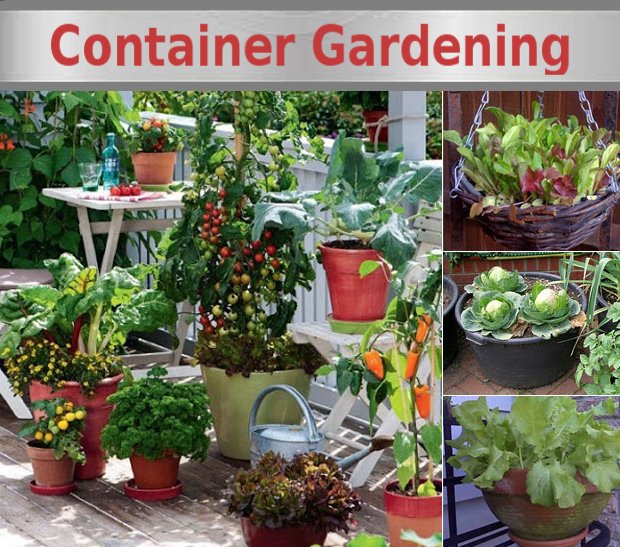
There are compelling reasons why all of us should attempt to grow our own food on some level, whether it is a little or a lot. One of the most obvious reasons to grow your own food is for the fun of it! What could be more rewarding than the self satisfaction of knowing we are eating something good for our health, and we grew it ourselves. Aside from the satisfaction and joy of growing, there is a much more compelling reason we should all attempt to grow at least some of our own food. The outrageous corruption and failure in the American FDA (Food and Drug Administration) to protect the American people from food and drugs that are actually dangerous to us, and harm our bodies. Many countries will not even import many of the United States food products because they contain ingredients which they have banned as being unhealthy or down right dangerous to their populations. 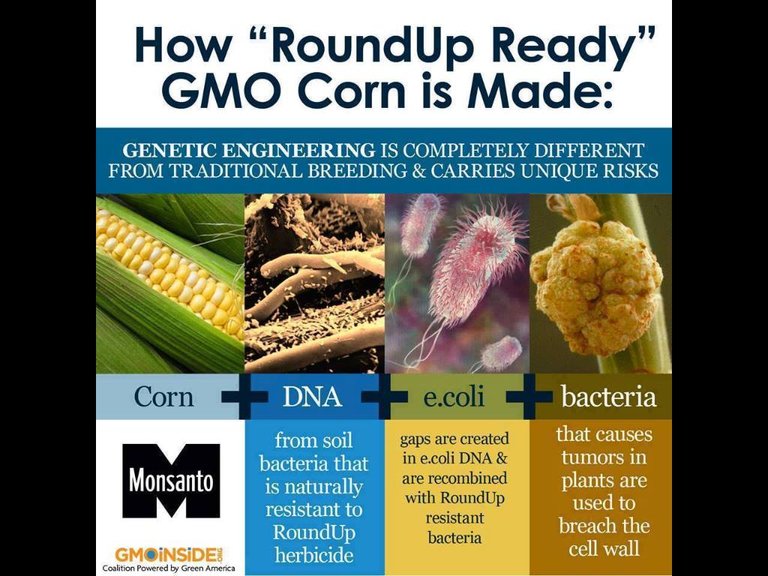
There are cereals on our grocery store shelves that contain plastics, not to mention nearly all of the wheat grown in the US is genetically modified. I don't know about you, but I do not want a pig's cell or dna, in my Cheerios or in my salmon; and that is exactly what is happening in many of our so called food products here in America. Some of the highly processed foods in American grocery stores are so processed that it is highly unlikely our bodies even recognize them as being food! I believe controlling what we put into our body as food, supplements, drugs, and even beauty and health products, is the key to living the best, happiest, and most disease free life that we can live.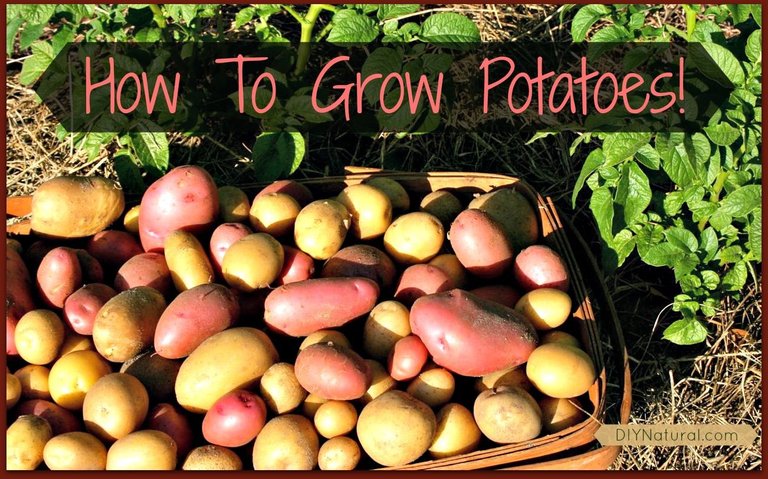
Believe it or not, I think potatoes are one of the most fun and easy vegetables to grow in an apartment, small space, or even in a space with a big yard. Any contrary to modern thinking, organically grown heirloom potatoes are extremely healthy and nutritious. Many gardeners overlook growing potatoes, mainly because they are so readily available and they think they are hard to grow. Nothing could be further from the truth, potatoes are actually easy to grow. Many people also mistakenly think that a potato is a potato, whether you buy it from a grocery store or you grow it yourself. The taste and texture of heirloom home grown spuds is incomparable to what you buy at the grocery store. The diversity of variety, jewel like colors, and unusual shapes of heirloom potatoes is enough to turn even the most jaded brown thumb into an avid heirloom potato grower! Most people new to heirloom potatoes, can't find enough space to grow all the beautiful and interesting varieties that catch their eye. When I see all the vibrant colors and crazy shapes of heirloom potatoes, they make me swoon the way some women swoon over a $10,000 Birkenstock purse! 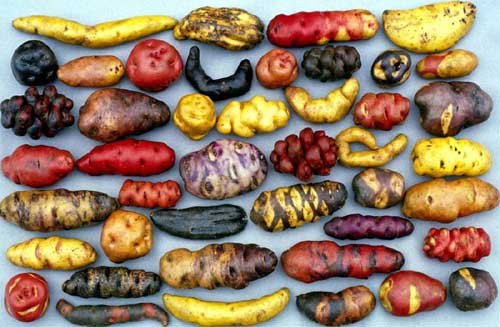 !
!
Have you ever seen jewels as colorful and beautiful as these Native Heirloom Potatoes from the Andes? How fun would it be to grow these on your own Patio? All these beautiful shapes and colors from the birthplace of Potatoes, South America.
I should take a moment to point out that everything I grow is from heirloom seeds and is grown organically.Heirlooms are plants where the seeds have been saved and passed down for at least 50+ years. Many heirloom seeds have been grown, saved, and passed down in families from generation to generation for 100+ years. Heirloom seed is open-pollinated, meaning, you can save the seed from the fruits, vegetables, or flowers and re-plant those seeds to get the same plant next year. .jpg)
One of the advantages of heirloom seeds is that they have been grown year after year so the plants have adapted to local soil and weather conditions therefore they tend to be hardier and more resistant to diseases. Another advantage with heirlooms is the wonderful taste and variety you get. Just take a look at the variety, color, shape, and sizes of the delicious heirloom tomatoes below: 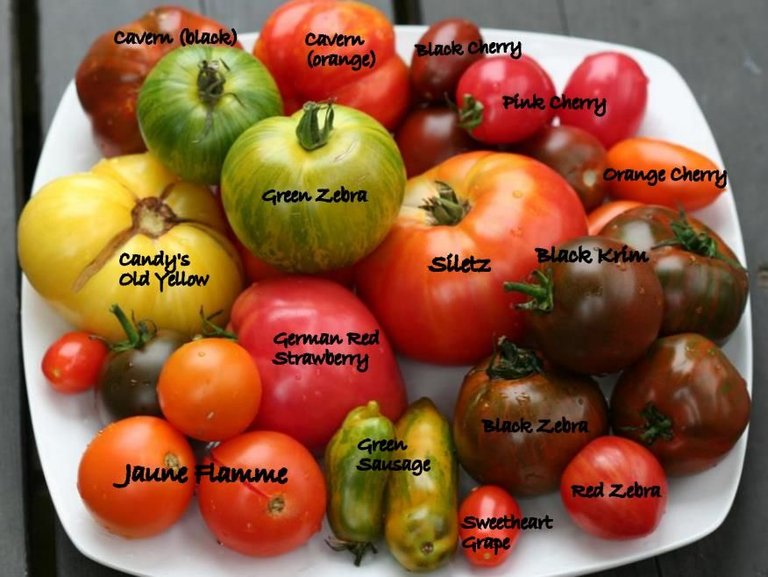
There are a number of reasons that I do not grow hybrid plants. Hybrid plants are created when two plants are cross pollinated, either naturally, or intentionally by people. The goal in creating hybrid plants is in obtaining a plant with the best traits of both parent plants. The disadvantage to growing hybrid plants is that you cannot save the seed and re-grow that plant again. With hybrid plant seed you never know what plant traits might be reproduced, whether it will revert to one of its parent plants or have entirely different traits. Another thing I do not like about hybrids, is that most of them were bred for commercial shipping and grocery store purposes so they look good, they are usually bigger, and the fruit or vegetables stay fresher longer, but all of that is at the sacrifice of taste and nutrition. I grow everything organically because it is healthier and more natural, the way plants grow in nature. Just take a look at this heirloom organic rainbow glass-gem corn. Have you ever seen anything so beautiful? No hybrid, No chemicals, No-GMO! 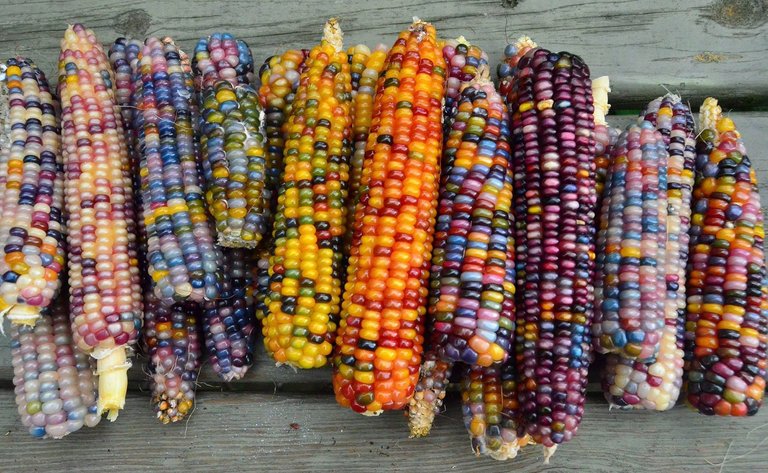
For most plants you need soil or compost, light, air, and some amount of water, and that is it! For potatoes you can literally plant them in any container from a trash can to a storage bin of almost any size, depending on the amount of space you have. 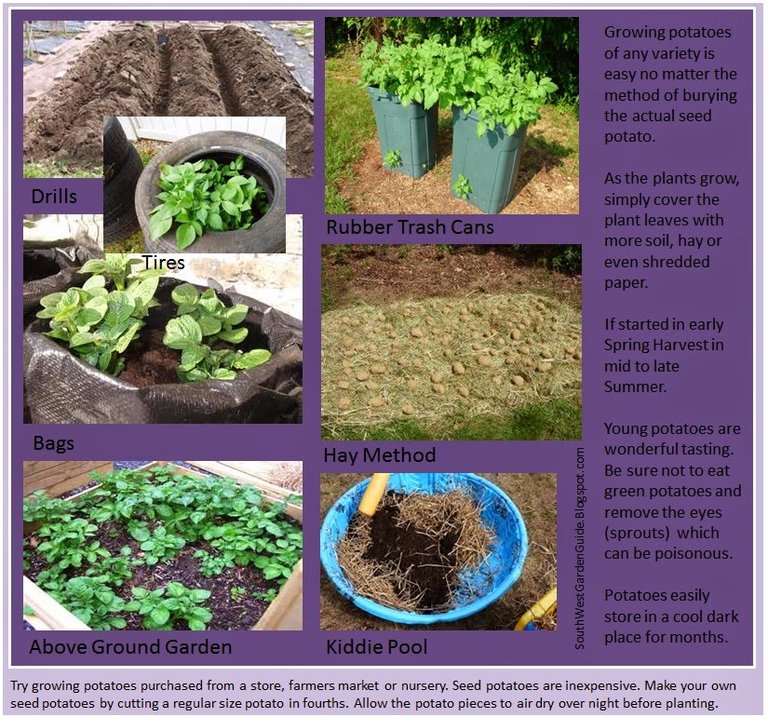
You simply fill your container with soil and pieces of seed potato,(which is just a piece of potato with @ least one or two eyes on it) or a small whole potato.
Potatoes should be planted 0-2 weeks after the last spring frost. They can be planted earlier, as soon as the soil can be worked, but realize you may lose some to late frosts. If you live in an apartment or small space and you are planting in a trash can or storage bin, then you do not have to worry about the late frosts or the usual planting time of early spring. There are some advantages to growing food in an apartment. The one thing necessary to grow food indoors, is a window with good strong light, or a balcony that gets plenty of light. If you plant potatoes in a large trash can so you can have a larger harvest then you may want to put your can on a potted plant roller so that you can easily bring it inside if you have a freeze.
How to plant your own heirloom potatoes:
Plant seed potatoes with one or two eyes, or a small whole potato, 0-2 weeks after last spring frost. If you live in a hot climate, you can plant potatoes in fall or winter, as they are a cool weather crop and need protection from sunburn.
If you are cutting up potatoes for seed pieces, you need to make sure each piece has at least one good eye, preferably two eyes. You need to cut the potatoes at least 1-2 days before you plan on planting, so they have a chance to form a protective skin over the cut sides, which prevents rotting and/or fungus disease.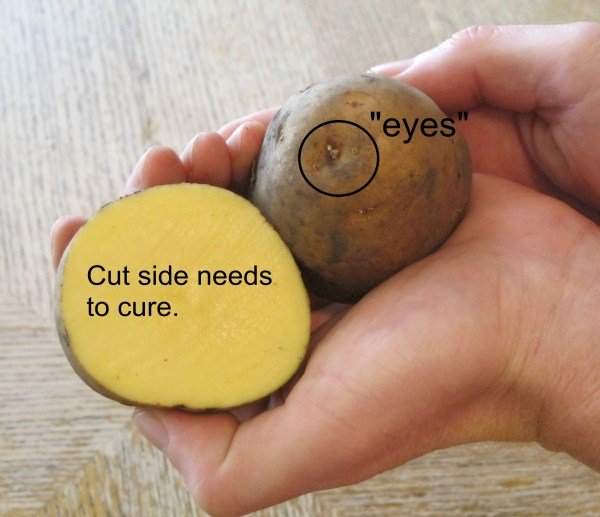
If you are planting in a yard or garden, you will need to dig up the soil and turn it to make it soft and easily penetrable. You should dig and turn the soil to a depth of at least 12"-18", then you dig a 4" deep trench to plant the seed potatoes in. If you are planting in a container, you will need to add at least 4"-6 " of pea gravel, lava rocks, or some sort of drainage material to prevent the potatoes from rotting. You can also drill drainage holes in the bottom of your container instead of adding gravel. Then add your soil or compost at least 12" deep. All of this will vary depending on the size of your container, there is no "magic" specific number, you just need to make sure you have enough gravel for good drainage, and enough soil to grow potatoes planted 4" deep, with room below the seed potatoes for the new tubers to grow, about 12"-18" total.
Spread or Mix in rotted manure or compost in the bottom of the trench before you place your seed potatoes in it. Place your seed potatoes about a foot apart (less than 12" for fingerling potatoes, about 6-8"apart) and 4" deep in the soil. Make sure the eyes on your seed potatoes or small whole potatoes are facing up.
Keep your potato plants evenly moist but not soaking wet to avoid rotting. When the plants get about 6" you will want to hill up the dirt around the base of the plant. This is done to avoid the tubers growing below the soil from getting any sun which turns them green and can make them poisonous. As the plant grows you just continue to hill up the soil around the base to ensure all the roots and tubers are protected from the sun. If you are planting in a trash can or bag type container, you can layer your seed potatoes as pictured in the below illustration. 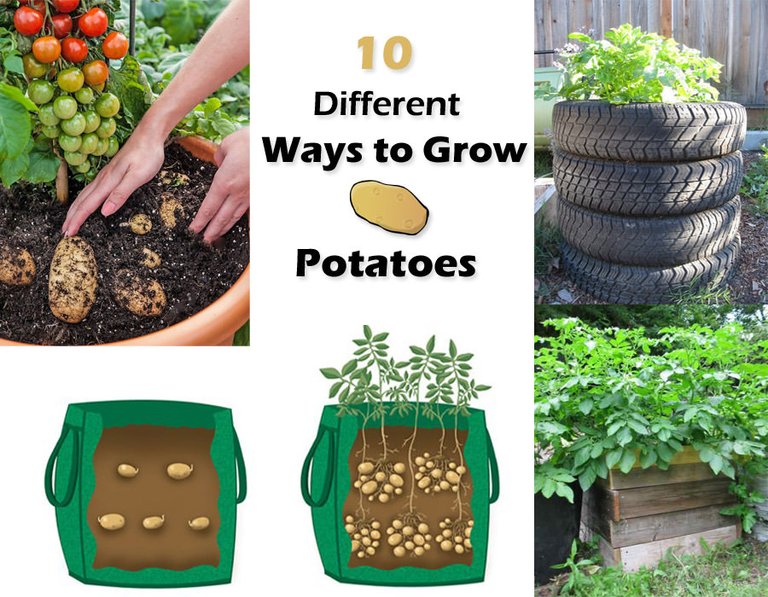
When planting in large trash cans or grow bags, just continue adding soil or compost as the plants grow and you do not need to worry about hilling the plants up in these types of containers. 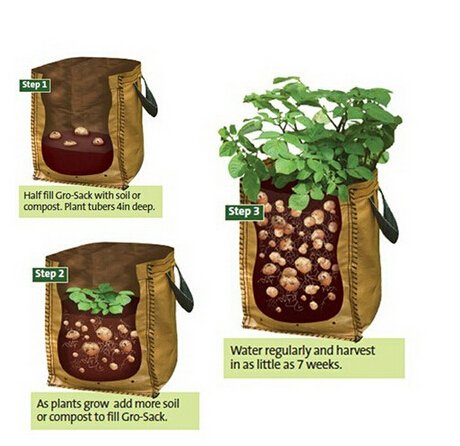
Bonus Care: Potatoes thrive in loose, well-drained soil. They should be kept moist but not wet. You should hill the soil up around the base of the plant before the plant blooms, usually at about 6" in height. This protects the roots, tubers, and supports the plant. Just continue to hill up the plant as it grows, every few inches. Take a look at some of these beauties! The first time you harvest and then taste the incredible difference in these homegrown jewels, you will be hooked! These heirloom potatoes are as beautiful inside as out, they even come in two-tone colors. 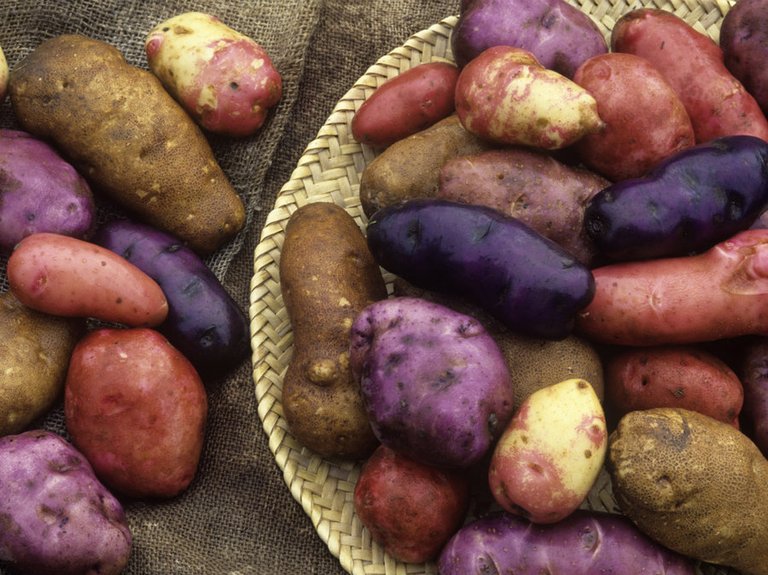
Harvesting Potatoes: Harvest time depends on what type of potato you have planted. Early season potatoes are harvested @ 60-70 days. Mid-Season potatoes are harvested @ approximately 80 days. And late season potatoes are harvested at approximately 90+ days.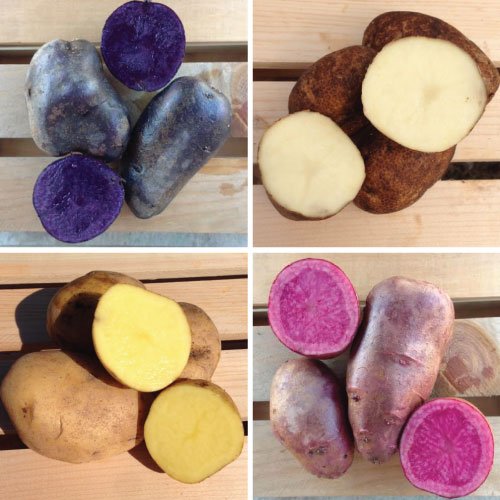
For the largest and best potatoes, you should harvest only after the plant's foliage has died back. Cut the dying foliage back to the ground, and wait 10-14 days for the potatoes skin to thicken; then harvest your potatoes by digging up with a fork or spade. Do not wait much longer than the 10-14 days after cutting back the foliage, as you risk your potatoes rotting. 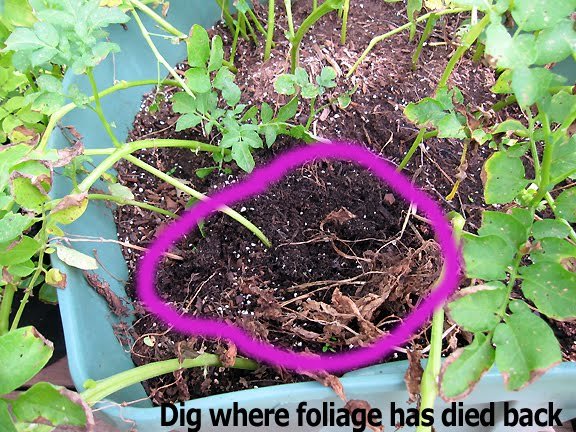
After harvesting your first batch of homegrown heirloom potatoes, you will finally know what a potato was meant to taste like! Their is no comparison in taste to homegrown heirloom vegetables, those things we buy in the aisle, produce, or freezer section of our local supermarkets cannot compare.
There are many more vegetables that are even easier to grow than potatoes. Some vegetables only require a few inches of soil, a seed, air, water, sunlight, and some type of fertilizer like compost or manure. Of course in the summertime, or if you live in a hot climate, you can grow one of my all time favorites, the ubiquitous tomato plant. But, I must insist that you will never taste a better tomato than the beautiful, colorful, delicious heirloom tomato. Just take a look at these heirloom beauties, some look like lemons or peaches complete with fuzz, some like bunches of red grapes, and all taste like you never knew a tomato could taste. 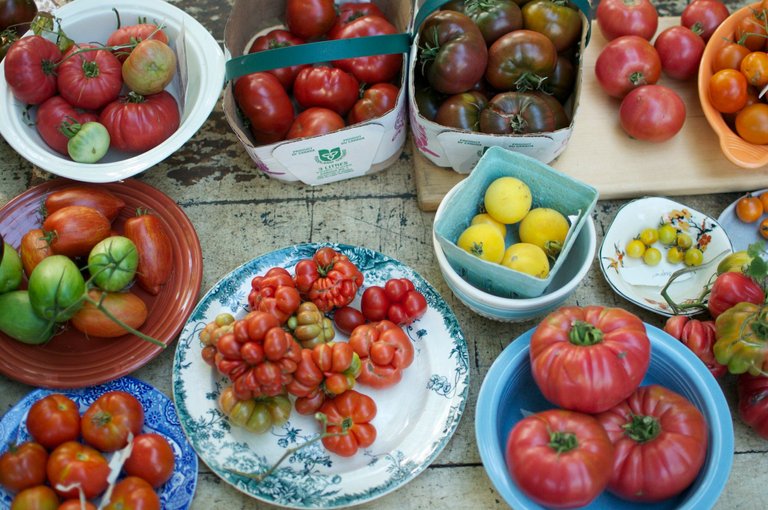
Sticking to the subject matter of growing food; if you live in an apartment, or do not have yard space, below is a list of some of the easiest foods that you can grow on a windowsill or balcony.
List of foods that are easy to grow in an Apartment or Small space:
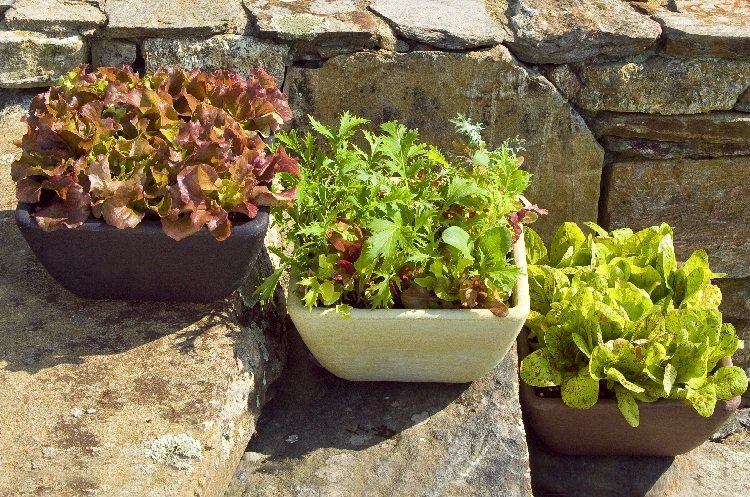
loose leaf lettuces or micro greens- All you need is a good soil or compost spread a few inches deep. Work in some compost or rotted manure. Sprinkle seeds across the soil, and gently water in. Place in a sunny window, or on a sunny balcony, and you can harvest lettuces in just a few weeks. If you want micro-greens which are even more nutritious, you can literally harvest in days. Micro-greens are one of the easiest things to grow, and they are nutrient dense. 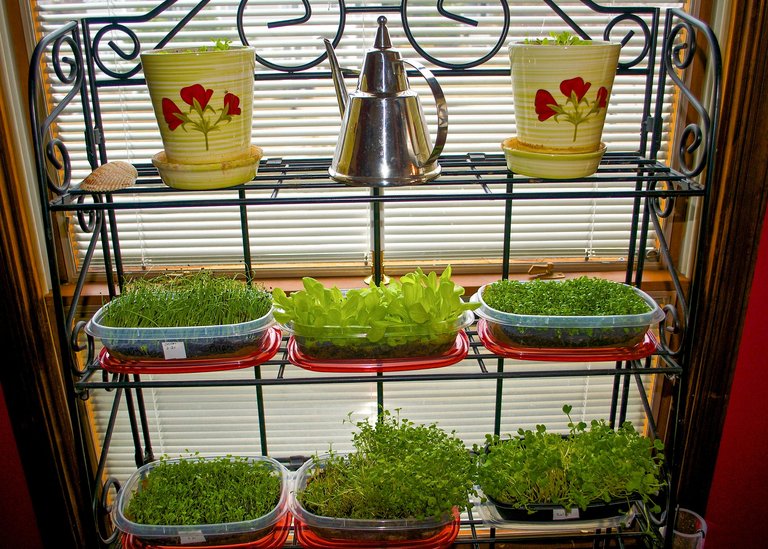
If you want cucumbers to go along with your lettuce, plant 2 or 3 seeds about an 1/2" deep in a flower pot. Gently water your seeds in, and keep evenly moist. As the plant grows you can allow it to trail up the rails of your balcony, or up a window, tying it in place if necessary. Cucumbers like it hot, and after they set fruit, you will need to keep it well watered but not soggy, as cucumbers are made of lots of water. You should avoid watering the last several days to 1 week before harvesting if possible. If it is really hot and the plant looks wilted, by all means water it, just water as sparingly as you can. The below picture is one of my all-time favorite cucumbers bar none! It is the heirloom Lemon cucumber, and it is easy to see where it gets its name. It is a mild, burpless, cucumber that you can eat without peeling, the skin is really tender, unlike most cucumbers. You really should try planting this, it's easy to grow. 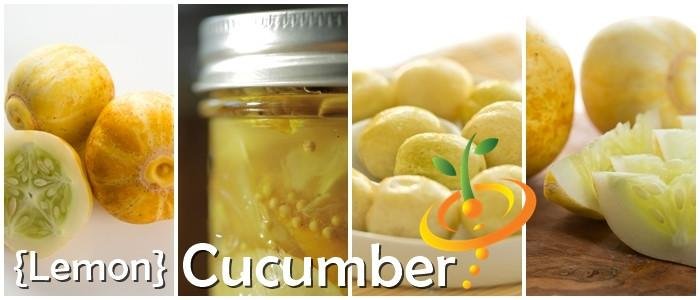
One of the absolute easiest foods you can grow in any kitchen window sill, is herbs, and I highly recommend you grow as many as possible, for the taste and health benefits. The health benefits of herbs are innumerable. I like to grow herbs in a strawberry pot with all of the openings all around, so that I can grow a different herb in each opening for variety. You can grow herbs in any container, and you can grow several varieties of different herbs together. I recommend you start growing the herbs that you use in your kitchen on a regular basis first. Then, add in one or two new herbs each time a plant finishes its life cycle so that you get a chance to try some new herb flavors you may love, but have never tasted. 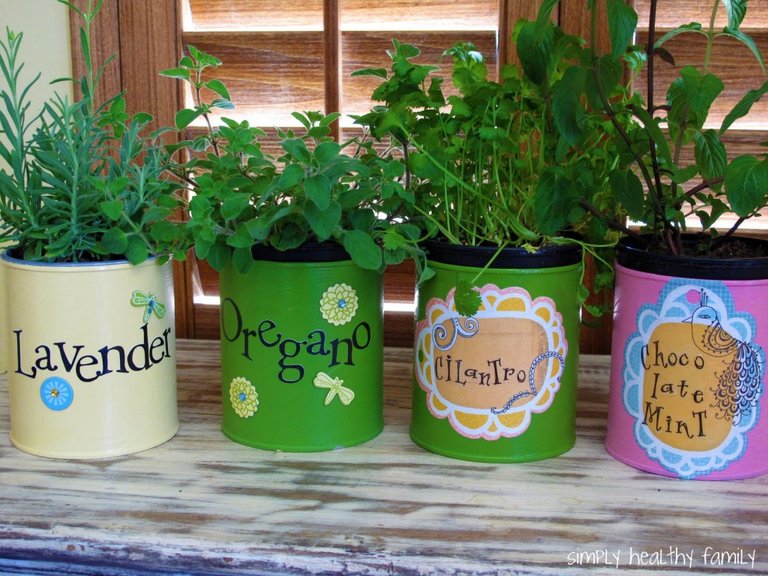
And don't forget that herbs were the medicines of our forefathers and Native Americans. Herbs can treat many day to day aches, pains, headaches, colds, stomach ailments, etc., and they treat them very effectively in most cases. Not only is this a cheaper and healthier way to treat illnesses, but most herbs pose little to no danger to us, unlike the litany of side effects that come along with pharmaceuticals. All you need to do is sprinkle your herb seeds on top of a container of good soil or compost, sprinkle a little soil over the seeds, and gently water the seeds in making sure the seeds have good soil contact by gently tamping them into the soil. Place in a sunny window and watch them grow! 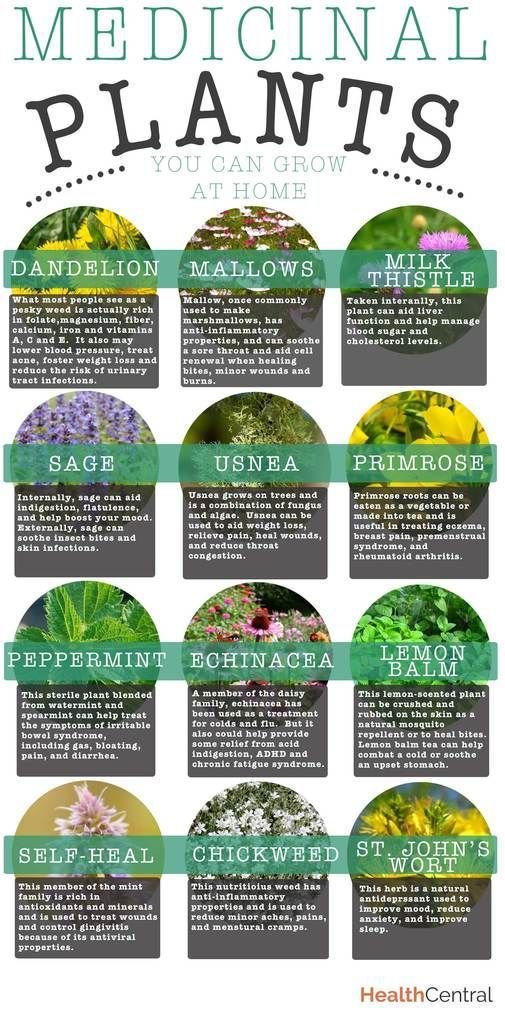
I have only covered a few of the foods that can be grown in spaces without yards. I am in the process of building a new gardening web site, and I will have a 'Grower's Club' that is free to join, as well as articles and videos on many great heirloom fruits,vegetables, and flowers that you can grow no matter where you live, or what kind of space you have available. We will have lots of great heirloom seed varieties, gardening books, and many, many, great things to teach or enhance a love of gardening. I hope to develop a platform where gardeners new and old, can communicate and help one another out. There is nothing like learning the tricks of the trade from an "old pro". The website will also offer great lifestyle articles and products geared to those who love beauty and substance, but not consumerism! As a girl who grew up on a thirty acre farm, replete with all the animals and several gardens, I am looking forward to sharing my love of the country farm life, heirloom organic gardening, and heritage breed animals. My website will be more about getting back to enjoying life, people, quality time, and enjoyable pastimes, instead of things and entertainment. We will have many how to's like: canning your homegrown or farmers market veggies and fruits. How to raise bees or where to buy local organic raw honey to enjoy and to prevent allergies and treat illnesses, Making your own rag rugs from scraps and old clothes, Quick, simple, delicious, healthy organic meals you can prepare in 30 minutes, how to make your own chemical free cleaners, etc.,
If you are interested in future gardening articles and info, country & farm lifestyle projects and products, etc., and/or in signing up to become a member of the "Growers Club" on my website, please email me your name, and questions you may have about Gardening, Country or Farm life, etc, and I will notify you as soon as the Website is up and running, we are in the process of creating the site now. Please email me your name and just put Garden in the subject bar @ [email protected]